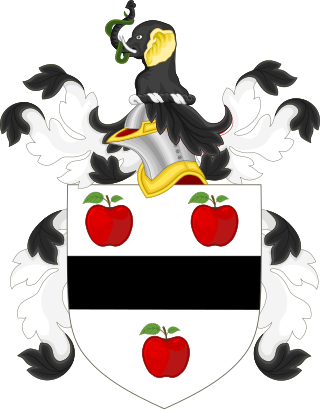Related Research Articles

John Jeffreys Pratt, 1st Marquess Camden,, styled Viscount Bayham from 1786 to 1794 and known as the 2nd Earl Camden from 1794 to 1812, was a British politician. He served as Lord Lieutenant of Ireland in the revolutionary years 1795 to 1798 and as Secretary of State for War and the Colonies between 1804 and 1805.
Gentleman of the Bedchamber was a title in the royal household of the Kingdom of England from the 11th century, later used also in the Kingdom of Great Britain. A Lord of the Bedchamber was a courtier in the Royal Household; the term being first used in 1718. The duties of the Lords and Gentleman of the Bedchamber originally consisted of assisting the monarch with dressing, waiting on him when he ate, guarding access to his bedchamber and closet and providing companionship. Such functions became less important over time, but provided proximity to the monarch; the holders were thus trusted confidants and often extremely powerful. The offices were in the gift of The Crown and were originally sworn by Royal Warrant directed to the Lord Chamberlain.

HMS Zebra was a 16-gun Zebra-class sloop of the Royal Navy, launched on 31 August 1780 at Gravesend. She was the second ship to bear the name. After twenty years of service, including involvement in the West Indies campaigns during the French Revolutionary Wars, she was converted into a bomb vessel in 1798. In this capacity she took part in attacks on French ports, and was present at both battles of Copenhagen. The Navy sold her in 1812.

The Livingston family of New York is a prominent family that migrated from Scotland to the Dutch Republic, and then to the Province of New York in the 17th century. Descended from the 4th Lord Livingston, its members included signers of the United States Declaration of Independence and the United States Constitution. Several members were Lords of Livingston Manor and Clermont Manor, located along the Hudson River in 18th-century eastern New York.
The Governor of Gravesend and Tilbury Fort was the military officer responsible for paired fortifications and blockhouses protecting the River Thames: on the south side of the river at Gravesend, Kent and on the north side at Tilbury Fort and West Tilbury, Essex. The fortifications here date from the time of Henry VIII; Tilbury Fort remained in military use until 1950, but the office of Governor was discontinued upon the death of Sir Lowry Cole in 1842.
The High Sheriff of Meath was the British Crown's judicial representative in County Meath, Ireland, from the conquest until 1922, when the office was abolished in the new Free State and replaced by the office of Meath County Sheriff.
The Governor of Chester was a military officer responsible for the garrison at Chester Castle. The equivalent or related role from the 11th to 14th centuries was Constable of Chester.
The Governor of Inverness or Governor of Fort George and Fort Augustus was a British Army officer who commanded the garrisons at Fort George and Fort Augustus in Inverness-shire. The office became a sinecure and was abolished in 1833.

The Appleton family is an American political, religious and mercantile family.
References
- ↑ "No. 6371". The London Gazette . 8–11 May 1725. p. 1.
- ↑ "No. 7205". The London Gazette. 16–19 June 1733. p. 1.
- 1 2 "No. 9140". The London Gazette. 11–15 February 1752. p. 2.
- ↑ "No. 12026". The London Gazette. 26–30 October 1779. p. 1.
- ↑ "No. 12139". The London Gazette. 25–28 November 1780. p. 2.
- ↑ "No. 13635". The London Gazette. 25–29 March 1794. p. 266.
- ↑ "No. 13797". The London Gazette. 18–21 July 1795. p. 756. Correcting "No. 13796". The London Gazette. 14–18 July 1795. p. 743.
- ↑ "No. 15728". The London Gazette. 14–18 August 1804. p. 1002.
- ↑ "No. 16657". The London Gazette. 10–13 October 1812. p. 2066.